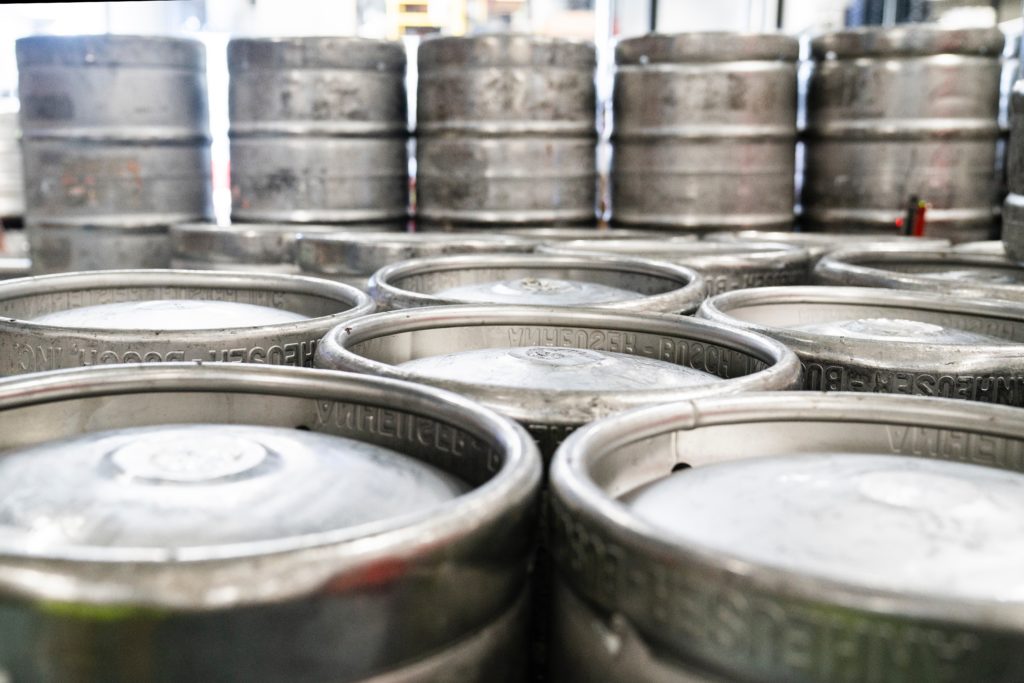Fintech and NBWA partnered up again to investigate 2020 Q2 beer data and see how COVID, supply changes, and seltzer shaped the second quarter.
As the roller coaster start to 2020 winds into the next quarter, it’s easy to see this year’s industry data has been significantly different than anyone could have expected. The global pandemic’s undeniable effects were felt far and wide throughout the beer world, with total beer volumes down about 2.5% overall – or 2.5 million barrels. During our Q2 Beer Industry Review Webinar with NBWA’s Chief Economist, Lester Jones, we dove into pre, post, and COVID-focused beer industry numbers and found all the ways we’ve changed how we make, deliver, and sell beer. Using Fintech’s powerful retail purchase data, which represents about one-third of total industry data, we can accurately benchmark what’s going on in the on and off-premise beer marketplace.
What we found is that COVID proved to be the great disrupter. Forced on-premise closures changed supply and demand significantly, and the industry as a whole now faces an uphill battle with regards to volume. But, by looking at our data, we found a few silver-lining instances that might turn out to help 2020 have a happier ending after all.
Innovation is the Key
While the initial numbers from the second quarter may seem daunting and scary, there is a lot of data to celebrate. From the steadiness of domestic and premium plus light brands to the innovation coming from the seltzer and craft segments. We said it at the start of 2020, and we’ll say it again – seltzer is the new king, and it’s definitely here to stay. During the second quarter, seltzer and FMB shares rose 11.3% weeks 12 to 20, and a whopping 13.4% weeks 21 to 30! White Claw, Truly, and Bud Light Seltzer are the category leaders, making up just over 80% of total seltzer shares ending week 30, and even newer brands, like Natural Light and Vizzy, are seeing share increases from the start of the year. Seltzer has been one of the most resilient categories of 2020 because of its wiliness to adapt and innovate. New flavors are continually hitting the markets, brands are launching summer-specific packages, and when competition shifts, brands are quick to capitalize. When White Claw faced supply shortages, other brands jumped at the opportunity to get their product to the shelves where they could, leading to healthy competition and overall category success. Additionally, many brands have already announced big year-end plans, so it’s likely the success will continue.
While the initial numbers from the second quarter may seem daunting and scary, there is a lot of data to celebrate.
Obviously, our big domestic brands found phenomenal recovery through the second quarter, proving the largest providers remain agile and quick to adapt to consumption changes. However, one of the brightest spots comes in the form of craft beer. Hear us out. Craft initially took a hard hit in Q2, but this is one instance where the numbers don’t tell the full story. The segment started the year at 10.8% of total shares but dipped down to 8.1% by the end of week 30, with only about half of the top brands finding positive shares in that same time frame. However, our Fintech data indicates that “All Others” in this category, meaning small, local craft brands, quickly and significantly adjusted their strategies. What started as a -5.4% dip in weeks 12 through 20 turned into a gain of 4.1% by week 30! By shifting distribution efforts from drafts to cans or bottles and adjusting to changes in consumer habits, the category showed a quick rebound that will hopefully continue for the months to come.
Drafts, Cans, & Bottles – The Good, the Bad, and the Ugly
The second quarter started just as coronavirus began to force social distancing and on-premise closures, and the losses caused by the shutdown hit the draft supply hard. Draft, which represents about 10% of the total industry, had a successful start to the year, but once the shutdowns began in week 12, Fintech’s keg data actually dipped into the negative (thanks to returns and product exchanges). The upside here is, where draft struggled, cans found massive success post-COVID – from week 12 through week 20, cans skyrocketed to 67% of total shares. The massive shift to at-home consumption meant that cans found favor across every vertical – from the grocery shelf to the restaurant to-go package. Two significant drivers of can success are seltzers and crafts, which we predicted at the very start of 2020.
Craft initially took a hard hit in Q2, but this is one instance where the numbers don’t tell the full story.
As bars and restaurants return to business, consumers are changing purchase habits and still reaching for cans and bottles. These packages also provide businesses with a bit more stability with products that can last longer than kegs. They are also easier to utilize for to-go and delivery business models. It’s clear that cans and bottles, which rounded out Q2 at about 97% of the total industry, will be the primary vehicles for beer moving forward.
The Big Holiday Change-Up
For years, the Fourth of July has stood alone as the largest beer holiday for the United States, but as we see from the rest of 2020, this year is just different. Memorial Day weekend 2020 topped out the industry with case volume up 52% over average weekly case volumes. The Fourth of July, however, came in only at about 46%. The cause? Likely COVID. Memorial Day fell right as many states began to lift restrictions, meaning consumers had more choices for where they wanted to celebrate. Lockdown fatigue likely also played a role, with people rushing to celebrate the first major holiday they could. By the time the Fourth of July rolled around, some states had already reclosed dining rooms and bars, and consumers chose to celebrate in a smaller way, resulting in fewer beer sales.
The holiday-heavy second half of 2020 will bring new brand and package growth numbers, and maybe even a new volume leader, but there’s still a lot to be decided. We saw our first round of fall seasonals attempting to break into the market in week 27. Will these brands push harder than ever to overcome market challenges? Will Labor Day see its normal spike in volume? Will social distancing impact consumption during Oktoberfest celebrations, Halloween, or year-end holiday parties? Time and data will tell.
The holiday-heavy second half of 2020 will bring new brand and package growth numbers, and maybe even a new volume leader
As we move forward in the year, there are a lot of questions still to be answered. Changing seasons, potential economic stimulus continuance, and the unpredictability of on-premise service will all play a role. Still, the most important question is how we, as an industry, help each other regain the millions of dollars of revenue and millions of jobs lost over the last few months. The rest of 2020 will probably be about as predictable as the first half, but regardless of the data we visit next time, it’s clear that our industry is a resilient powerhouse poised to hopefully make big returns.
Want even more insight into the second quarter beer data? Listen to our full webinar here.
To learn more about the partnership between Fintech and NBWA, visit www.NBWA.org or contact us today!






